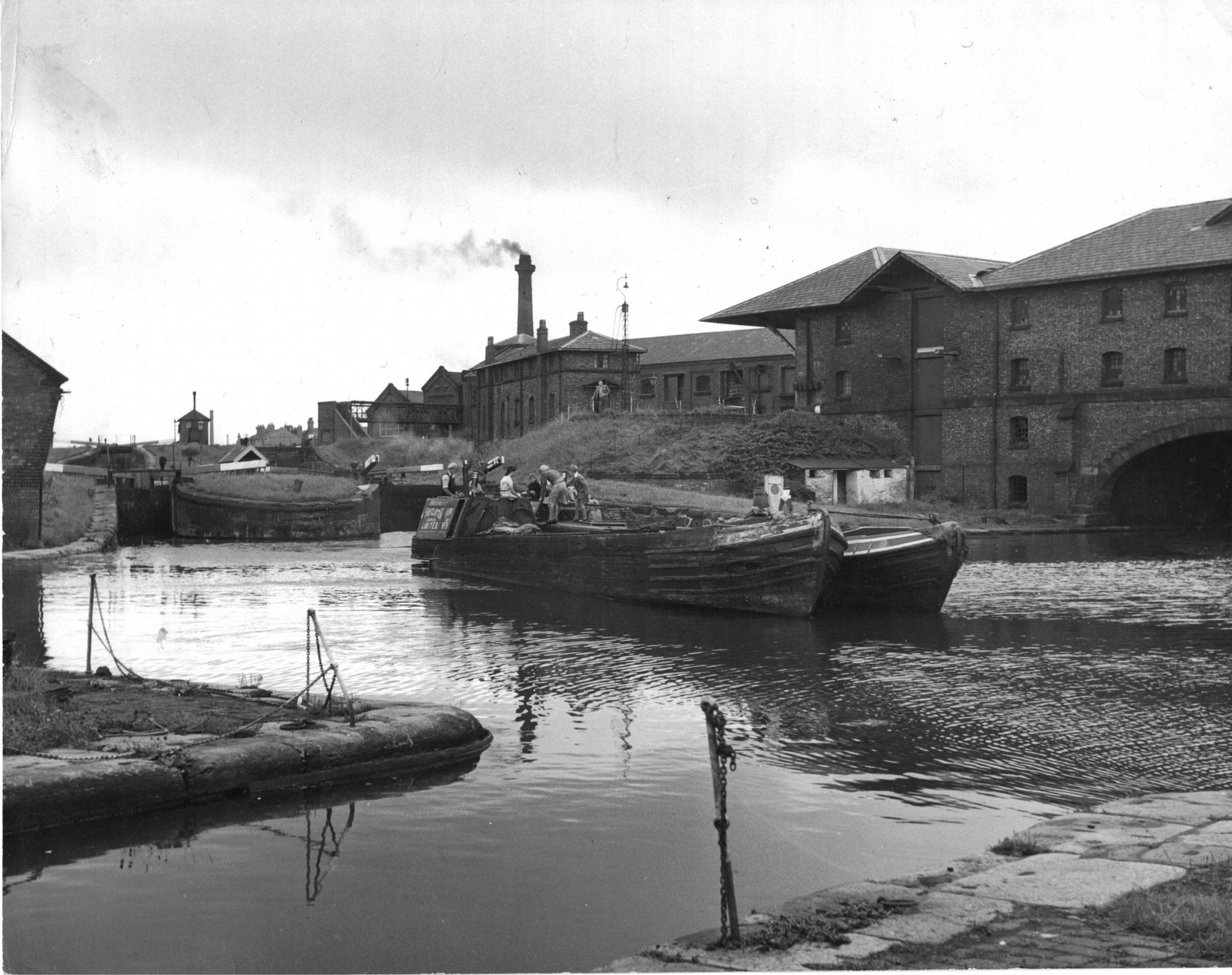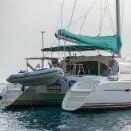Leaderboard
Popular Content
Showing content with the highest reputation on 05/10/17 in all areas
-
Seems to have been taken from the T.W. Will King collection, Dudley Public Library/Black Country Museum. Does T. W. Will King hold the copyright? Many images have been seen on this forum that have come from many sources, and sometimes there's a storm in a tea-cup over them - usually if someone is attempting to make money from them. Go look on Ebay, images for sale from all over the place. Nice to see the boats Ray, (and the family).3 points
-
As i see it you have asked a question re your stoves safety . The question has been answered . But you don t like the answers because theyre honest & accurate and make for uncomfortable reading . If u ask a question expect an honest appraisal of the situation . Otherwise dont ask . Fortunately you do have smoke alarms and CO alarms . Good .Test thier batts regularly . If you haven t done so already you will need to sweep the flue . When u do this crud will fall from inside the flue so you will need to remove the " baffle plate " or " throat plate " that sits on top of the firebricks that line the interior of the stove . Replace baffle plate after . You will need to check the fire rope seals where appropriate - look on google . I make no judgement on your decision to rent a narrowboat . Up to you . But when you do so you are likely to be on your own . Expect no assistance from the landlord . Stoves are dangerous if not maintained . CO kills . Fire kills . . I couldnt care less if you die by either method , no skin off my nose - my concern is always the other people nearby or other people on your boat who may come to harm because of your decisons and workmanship . Either way , whoever pays is no ones concern but you & your " landlord " . Your agreement , your problem . Most folk on the forum are unlikely to care who pays and only concerned with offering advice about safety . So get the work done and if you have to pay for it yourself so be it . As for your comments about " being a happy bunch " - largely this is true . I am - my boats warm & set up for the winter to come as i serviced my stove in August before cold sets in & i know its not trying to kill me . Get your stove sorted mate , who cares who pays - it aint worth the risks involved cheers3 points
-
No, simply a loose community (of boaters) that by their very nature care about their 'fellow man' and look out for one another: something that is becoming increasingly lacking in society in general but which is, however, alive and well and an intrinsic part of life on the waterways.3 points
-
As a confirmed narrow boater and student of canal history with little interest outside of narrow craft made from steel or timber you might think it's obvious where my sympathy will lie. However I don't agree with the premise of the OP at all. In 50 years since the end of wholesale commercial carrying we have gone from the threat of little or no craft on the waterways to worrying about what sort of boat can go where. The true threat to canals is from under use not over use or perceived inappropriate use. The rise in demand for boats is a product of our time and things will not be so favourable regarding the usage of canals forever. In some places it still isn't and the threat of consequences of underuse are real. Be thankful for what we have. The 'blame' for this situation lies with the Grand Union company; it was they who opened up north of Braunston for wider craft with their ill-fated widening of the Napton & Warwick and Warwick & Birmingham canals. Before that I believe the stop narrows at Braunston toll house was only wide enough to pass narrow beam boats. Personally I think it a great shame this scheme ever happened. However we can't change the fact that it did happen and we must deal with the consequences. It was also that scheme which gave rise to the real anomaly in this debate; namely that the section of the south Oxford between Braunston and Napton that is part of the wide route from London to Birmingham is surely even less suited to wide beam craft than the north Oxford beyond Braunston? As for the issue of Berkhamsted being the northerly limit for wide beam craft I don't believe that the intention of either the Grand Junction company in 1800 or the Grand Union company in 1930 was that their wide locks would never be used by wide craft. It was lack of demand requiring such that caused that. There also was a time in history when wide boats did trade to Braunston in small numbers. Today there is a demand for wider craft and the principal problems around the movement of wide craft are dredging and vegetation management which are eminently solvable. This section of canal may never be ideal for wide craft but that it is delicate point since it can easily be argued that craft longer than 57' in the north or ex-GUCCCo boats on the BCN are not suited to those canals yet such craft do operate in those areas. And there is unlikely to be any craft on the network with more potential for causing damage than a butty crewed by volunteers. So I would say put the effort into campaigning for dredging and particularly vegetation management instead of telling others where they should or shouldn't take their boats. Ultimately it may just be doing canals more harm than good. JP3 points
-
"The largest movement of historic boats". Obviously never been to Braunston then.2 points
-
This is definitely born out by my practical observations. If we stop for lunch, on restarting the engine the initial charge current may be over 100A even though the SoC might be 98%. But of course very rapidly the current falls off. The chemicals very near the surface have reacted to keep the boat going for an hour or so, and now the same chemicals very near surface react the other way. If we discharge overnight to say 75%, of course we get a high charge current to start with and this tails off gradually but is still quite significant at say 90%. If we discharge to 50% same high initial charge current but by 90% the charge current is very low and it takes ages to fully charge the batteries. If we stopped at 4% tail current it would probably only be 95% SoC. This last very slow stage is of course due to the need for the chemicals buried deep within the plates to react.2 points
-
So why say it then if it's not relevant? It's the automatic use of such language that shows your intrinsic racism. Actually, it may be time for you to stop digging - why is colour so important to you (I detect a pathology here)... and why a tenant? Are homeowners just a better class of people and so unlikely to be nasty to you? Racist, classist... unable to argue without abuse... no wonder Peel don't bother with you - it's got nothing to do with the legalities, they just don't think you matter much. And nor do I.2 points
-
This post cannot be displayed because it is in a forum which requires at least 10 posts to view.
-
1 point
-
1 point
-
Vigilante action to obstruct navigation? Turning boater against fellow boater.... This sort of nonsense just reinforces the points made earlier about the mindset of some narrow boat owners. Is that really what you people want?1 point
-
It would only need one narrow boater to moor in the narrows to prevent passage of wide boats while allowing passage of narrow boats so well volunteered GJN. Let us know how you get on. JP1 point
-
Is it just me or do you wonder how the boat got in ....the width behind the stern looks too narrow to get that width boat through! Is it. Lock parking spot? Hate to say but I love marmite and I love boats but to me, boats are like marmite!....try licking yours after dropping your nice freshly prepped piece of 'marmite on toast' on the roof whilst trying to get in a lock!1 point
-
1 point
-
I called by the Nat West Bank in Urmston today, only to find that they are now closed on Thursdays. My immediate thought was that it would be something to do with the canal!!1 point
-
1 point
-
1 point
-
i was being dare i say it a bit sarcastic ...just get a bit fed up about how boat owners get it in the neck about how they use there boats ...if they use it twice a week once a month .what does that have to do with anyone ...its there boat ...1 point
-
No they are not. Check these photos of some Marmite, and of a boat: COMPLETELY different, I'm sure you'll agree....1 point
-
Following this thread with interest but have nothing to offer to support 'either side', however, your claim that they are 'breaking the law', would, I am sure, garner much more support if you were to cite the law they have allegedly broken, and, in what way they have broken it. Just because something is not how you (we) would want it does not make it 'breaking the law'.1 point
-
1 point
-
Yes - know what you mean - I had one of those (absolutely awful she was) but is no longer with us.1 point
-
I don't know if this is a good analogy or not? The National Railway Museum in York has many exhibits which will probably never be seen on public rails again - partly because they are too fragile or the museum doesn't have the money to restore them. The railway preservation world seem to accept this. Just a point of view, not necessarily mine, better to have some of the exhibits in dry storage rather than have them rot away. CRT are on a hiding to nothing here, no matter how they operate they will never satisfy some. If folks are so outraged dip into your pockets to help the museum restore them as floating exhibits.1 point
-
Michael - Think about it, pretty much every narrowboat is a one - off and pricing is a much more complex business than with say a grp cruiser with a high production run where it's mainly age that determines the value. When you consider the variables that affect narrowboat pricing, type of boat, age, builders name, type of engine, transmission, heating, internal layout, window type, etc etc you see that you do need a fair grasp of the market before you can start to make sense of it. And it changes over time and with the seasons, for example a walk through bathroom was once a big negative but now everyone seems to want one, ditto the "reverse" layout. Having said this, the market at the moment is just crazy, and almost anything that still floats is £20k. I spoke to a boatyard owner just the other day and he said they had never thought of getting into selling boats but it's so easy at the moment to buy a "sinker" do it up and make a decent profit they can't resist it. But the entire spectrum is affected by the clamour to get on the waterways. It is certainly a very bad time to be buying your first narrowboat. All in all I would resist every temptation to get into the market at the moment, the current situation can't last so instead use this time to go and look at a lot, an awful lot, of boats. You'll get a good idea that way of what influences price. In this respect don't be afraid to be up front with brokers, generally speaking if they are sure you aren't a "tyre kicker" they will be very patient but the problem is there are a lot of folk looking at boats these days who don't actually have the money, usually because they still have a house to sell. Brokers are understandably a bit wary of people looking at expensive boats. Being an active member of this forum can shorten the learning process considerably and if there's one thing we like on here it's spending other people's money..!1 point
-
I've been watching this thread for years, and can finally contribute something. I used to work on the hotel boats Dawn and Dusk in 1987. The couple that owned them then also owned Beck, and lived on her during the winter, while we carried out repairs to the hotel boats. Late in 1987, I took Beck from Kinver to Chester overnight. She'd been stuck on the bank in Kinver having been left all summer. Happy memories, but not £60k's worth. She didn't have electric start then.1 point
-
Now this is just getting silly. Attack me all you want it's no relevance to the discussion1 point
-
This post cannot be displayed because it is in a forum which requires at least 10 posts to view.
-
Maybe so, but is that all you can come up as a constructive argument? You could just press the report button rather than be all holier than thou and possibly kill off an interesting thread.1 point
-
Going back to the discussion between Nicknorman and Wotever, I concur that you are saying the same thing about 'charge' being lost – one of you saying it is time dependent and the other saying it is lost in that cycle. I think Nick's description in post 38 is a really good way to describe what is likely happening (snipped above) and doubt if there is a simpler way to put it. The outstanding issue then is to answer Tony's question of why 12.7V is higher than the theoretical output. I've got a PhD in Chemistry and I dont understand so what hope have we got here! I think we have it right that the generation of electrons is binary, it happens or it doesn't. I never really got to grips with electrons moving – they just transfer their charge to the next atom not actually move. Dont forget volts are just the potential – not the current. The potential will be limited by the chemistry ie the lead/lead oxide / H2SO4 equilibrium (as Nick says). That potential should set up an upper limit which cant be exceeded. At the upper limit of potential, the potential will stop further electons being formed by reversing the equilibrium. If demand, ie current draw is high, lots of sites will convert lead/lead oxide to lead sulphate and current flow will be high. Likely this will reduce potential as the chemistry reaction tries to keep up with demand. This 'sort of' explains why voltage drops with load but not why we get the 12.7V. Perhaps the 12.7V is a surface effect – ie why is my battery showing 13V+ just after the battery charger is turned off? Shouldnt it immediately go back to its theoretical maximum potential? I think the chemistry is far too complicated for us here. Nick's explanation on time dependency raises other issues for me. If we assume the lead/lead oxide buried deep in the plates takes time to react then we can paint the picture where a site say 50% deep in a plate will only offer up its electrons and convert to lead sulphate when the SoC is 50% ish. OK so far? Now when we put the battery on charge, the sites that will be converted back to Pb/PbO will be the ones on the outside of the plate and if we only achieve 95% SoC on recharge, our 50% site will still be PbSO4. Next time we discharge we go to 60% charge and recharge to 98%. That 50% site is still PbSO4 and so on. In a few weeks of this, if we never achieve 100% SoC, then that site will still be sulphated (although I have no idea how long to that remaining permanent). It really is important to get that last bit of charge to 100%. Bottom line, the last sulphated Pb/PbO sites to be converted back to Pb/PbO will be the most difficult to get to (for the acid) and not 'first in- first out' as the layman might think. My head is starting to hurt now.1 point
-
Fair point about the engine. The JP2 is a superb unit if you like kerlonk-kerlonk and the one in Beck is a JP2M which is good. Overplating is a bit of a concern though.1 point
-
Problem is with so little detail, and no internal pictures, you can't tell just how much it might be a comedy price. A Station Boat conversion we were after was mid £50k pricing, 3 years ago - probably too much but seller not open to negotiation. Than had an RN - some might well prefer the JP. I presume you mean for appearance, rather than longevity or durability? If so, I agree - I think they have a fore-end that is quite attractive. However, we are told they suffer the usual Yarwoods problems of not really having enough rivets on the knees, making corrosion between knees and plate more likely, amd a greater tendency to pulled rivet heads, (yes, I know - that hasn't stopped me being the owner of two Yarwoods boats!). This advert says " Full length steel overplating 2006.", but doesn't really say what that covers - something that would need a lot more investigation, I feel. Dolphin has already been dropped by £5K, I think, and still doesn't seem to find a buyer. Whilst the long tug deck may well appeal to many, because the space under it isn't used as a bedroom, it obvioysly means far less accommodation tham in many other full lenth conversions. Also it has a Bolinder Munktell 3-cylinder engine, claimed 1960s, which I think many will not consider as desirable as a JP2. If you buy an "historic" with an engine that doesn't really appeal, the cost to chane can be very high, (not just "new" engine itself, but everything else it will probably force you to change as well. This would heavily limit my interest in a boat, if the seller hadn't factored that into the price, (one of the reasons we never even looked at a boat with a FOUR cylinder Gardner).1 point
-
My daughter lost her house key and got locksmith out to access her house and found keys a few days later in her washing machine. If you want her address I will give it to you it could be in there?1 point
-
That's a little bit silly. We are talking widebeams here and that's the maximum width for a widebeam.1 point
-
One of the more useful articles that has turned up on the 'Dark Side': Registering with a doctor as a continuous cruiser PUBLISHED: WEDNESDAY, 04 OCTOBER 2017 THERE should be no problem with registering with a doctor as a continuous cruiser. But often there is, as I found out some time ago, writes Keith Gudgin. I found there is no valid legal reason why a doctors surgery can refuse to register you just because you do not have a permanent address or, more annoyingly, one of those stupid postcodes. All in the document The details are all in an NHS document called: 'Who pays? Determining responsibility for payments to providers: Rules and guidance for clinical commissioning groups’ published by NHS England. A pdf copy of this document can be found here: https://www.england.nhs.uk/wp-content/uploads/2014/05/who-pays.pdf When I was trying to register with a doctor I was given all types of excuses why I could not from not being resident in their area to being too old or requiring too much treatment. Refused a registration This is the letter I received from a Mr Peter Hawkins at the Department of Health when I complained to the parliamentary office after I was refused a registration: The text of his reply is copied at the end of this article which in it states ‘the absence of a permanent address is not a barrier for a person with ‘no fixed abode’ to registering with a GP practice. I also complained to NHS England highlighting the points made in this letter. I am now registered with a doctors' surgery and my registered address is the surgery address and has been since 2013. Don't be fobbed-off Don't let the surgery fob you off. They have no right to refuse you. If you encounter problems registering with a GP or obtaining treatment, contact the clinical commissioning group (CCG) responsible for commissioning health services in that local area. Contact details can be obtained from the GP surgery or on the NHS Choices website at: http://www.nhs.uk/Service-Search/Clinical%20Commissioning%20Group/LocationSearch/1 If you don't get satisfaction then complain to NHS England here: https://www.england.nhs.uk/contact-us/complaint/complaining-to-nhse/ And also complain to your MP here: http://www.parliament.uk/get-involved/contact-your-mp/ after all you are entitled to a doctor. Complaining worked Complaining worked for me, in less than 24 hours after I sent an email complaint to NHS England I had an email from the doctors surgery stating I was being registered with them and my registered address would be the surgery address. They now send all correspondence to me via email. You don't even need to keep going back to them for prescriptions if you are on regular repeat medication. You can get your repeat prescriptions anywhere in England by using the electronic prescription service (EPS). A chemist near you All you need to do is go into a chemist near where you are moored and get them to register you on the system. Get their details i.e. address and EPS code and send it, I use email, to your doctors surgery asking them to put your repeat prescription on the EPS using the details you have sent them. Leave it a couple of days to be done then you can collect your medication from the chemist. Don't worry about moving to a new area and needing a new prescription as you can re-register at another chemist at any time, just make sure your surgery knows the new chemists details when you ask for your repeat prescription. I've been doing this for some time and it works fine. It's also best if you get your doctor to issue you with three months worth of medication at a time then you don't have to re-register too often. The letter from the Department of Heath Here is the text of the letter I recieved in 2013 from Peter Hawkins at the Department of Health: Thank you for your email of 4 October about registering with a GP. I have been asked to reply. The document ‘Who pays? Determining responsibility for payments to providers: Rules and guidance for clinical commissioning groups’ published by NHS England states that ‘the absence of a permanent address is not a barrier for a person with ‘no fixed abode’ to registering with a GP practice. In many instances, practices have used the practice address in order to register a homeless person’. While the guidance does not specifically mention people who cruise on the canals in the UK, it does cover the general term of people with ‘no fixed abode’. In addition, if a person wants to see a GP and is visiting an area for more than 24 hours but less than three months, they can apply to register with a GP surgery as a temporary resident. The application can be made using form GMS3, which can be requested from the GP surgery. A person can register temporarily with a practice near where they are currently staying and still remain a patient of their registered practice. Furthermore, if a person is ill while away from home or if they are not registered with a GP practice but they need to see one, they can still contact their nearest practice to ask for treatment. People are entitled to receive emergency treatment for 14 days. After that they will be required to register as a temporary resident or permanent patient. Finally, people can also visit a NHS walk-in centre or minor injuries unit. If people encounter problems registering with a GP or obtaining treatment, concerns should be directed to the clinical commissioning group (CCG) responsible for commissioning health services in that local area. Contact details for CCGs can be obtained from the GP surgery or on the NHS Choices website at: http://www.nhs.uk/Service-Search/Clinical Commissioning Group/LocationSearch/1 (enter the postcode of the GP practice, or temporary residence in the search field and follow the links). I hope this reply is helpful. Yours sincerely, Peter Hawkins Ministerial Correspondence and Public Enquiries Department of Health1 point
-
Unfortunately, those people are still there dictating the anti widebeam, anti livaboard anti everything that stops their pleasure cruises in August. They are so far removed from the initial IWA values and still seek to be CRT'S minder for future initiatives in ridding the waterways of scruffy boaters, wide boats, liveaboards, CC-ers who don't cover the entire system in 3 months etc They are massively irrelevant and if just one of the local IWA groups declared indipendance, it would be a catalyst for change long overdue.1 point
-
1 point
-
If its CCing its almost certain to be unofficial as I think you have to have a home mooring to rent. There is no security of tenancy on a boat, it is not like renting a house or even a room. At the end of the day you are on your own. Just think back to the young lady on Midnight Diamond that sank with all her possessions and worldly goods. Take great care.1 point
-
No, no charge is "lost", this is the point that you don't seem to grasp even though I've mentioned it before! It's all about two things: 1/ the definition of battery capacity and 2/ the nature of the chemicals and their reaction in the battery. For 1/ the battery capacity is determined by steadily discharging the battery until the terminal voltage drops to nominally flat, typically 10.5v. If you discharge the battery faster, you extract less charge before the voltage reaches 10.5v. The degree can be determined by Peukert. For 2/, the chemicals (simplistically, lead and sulphuric acid) react together to produce lead sulphate for each molecule, an electron is liberated (or is it 2, can't be bothered to check!). But the reaction isn't instantaneous and relies on the two chemicals being able to come into intimate contact. To start with, lead on the surface of the plate and sulphuric acid adjacent, is free to react swiftly. But later once those chemicals have been exhausted, lead deeper in the plate and sulphuric acid further away, need to react to pump the electrons round. It takes a while for the chemicals to diffuse towards each other and so the reaction slows, the terminal voltage decreases. The faster one tries to discharge the electrons the faster the chemicals have to react and so, due to the time it takes for the chemicals to migrate to each other, the lower the terminal voltage. Hopefully you agree so far! What is behind Peukert bearing in mind 1/ and 2/, is that if you discharge at say C5 you will reach the nominally "flat" voltage of say 10.5v having extracted fewer AH than if you discharged at C20. But remember that for each molecule of the starting chemicals, there is a correlated number of electrons available to be transported. Faster discharge doesn't miraculously cause electrons to disappear. It merely means that the chemicals buried deeper in the plate don't have time to migrate to meet the acid in time to keep the terminal voltage above 10.5v. But having discharged at C5 and reached 10.5v, if you then let the battery rest you will find that the voltage increases and further discharge at a slower rate is possible, recovering nearly all the apparently lost charge since the chemicals have had time to migrate. This phenomena is often observed when one tries to start the car/boat, it won't start, the battery is now "flat" and won't turn the engine over. But walk away and come back after 30 mins and the battery has a new lease of life and is able to turn the engine over again. So in summary, Peukert means that if you discharge at a higher rate you will reach "flat" voltage sooner. But it doesn't mean chemicals have evaporated nor that the concomitant electrons arising from the reaction have been beamed into space! They are still there to react and produce more electrons once they've had time to find each other.1 point
-
Thanks for that wet vac. It was a challenge mooring in those huge gusts between the high rise buildings. Two people on the centreline and the bow thruster could not stop us blowing across the dock. No damage except the bow thruster batteries never recovered from the exertion and were sent ashore at the beginning of this year. There is more then one WHIO and I can assure you all the people we had on board this year would be extraordinarily flattered to be mistaken as our off spring.Must have been WH11 you saw!!! Don and Val1 point
-
As I found when I joined, you are the king of insults here. If you weren't apparently 'friends' with Daniel you would have been banned from this forum long ago. Other than your input, a very interesting thread and thanks to Gigoguy and others for the constructive input.1 point
-
From what I have seen the IWA are briefing a great deal against live aboard boaters, at least where it relates to the South East and particularly the London area. In doing this they purport to be speaking for other boaters who are not live aboard, of course. I'm not a full time live aboard, nor ever likely to be close to being one, but I do not find any stance that seeks to divide boaters into different camps, and hence divide them to be in any way helpful. There is plenty all boaters need to be concerned about in terms of our canals, how CRT manage them, and particularity how important CRT actually choose to make boating as part of their total remit. What is needed, in my view, is for us all to try and understand each others position, and to try wherever possible to be putting as united a front as we can to CRT, (although I realise this is often far from straightforward!). Overall I think people like the IWA leadership, (at one extreme), and the NBTA leadership, (at the other extreme), tend to be doing more harm for boaters as a whole than the good they think they are doing for the rather small percentage of all boaters that they believe they represent. I suggest the vast majority of us boat owners do not hold such extreme views, of see quite as many of our fellow boat owners as "the enemy". A lot of the unhelpful and divisive comment actually comes from a very small percentage of all boat owners.1 point
-
....and you just know that CRT 'S master plan will be to place NO MOORING signs on this section after one or two widebeam owners complain about scratched paint because those nasty narrowboaters were moored there.1 point
-
I've written on this before, but we owned the GUCCC widebeam craft Progress that was used for the ceremonial opening of the widened section Braunston-Birmingham at Hatton in 1937. We cruised London to Braunston several times in the 60s and on up to Camp Hill twice. Progress was 74' x 12'6". FMC also had an experimental craft Pioneer, but that was broken up by the time we came onto the canals late 50s. That said, Progress and Pioneer were both experimental craft and the experiment was abandonned as it was too problematic for the standard narrowboat traffic at bridges and tunnels in particular. I love wide beam vessels and we worked several in the London area. Our ex-partner Tim Wood still continues with some 4 Leeds and Liverpool shortboats and a couple of Dutch work flats we brought over in his WHH fleet of maintenance craft, though we took ourselves off to France where a wide craft is in its proper element. I do have to agree that although the Grand Union can cope with a handful of wide vessels it is not practical for there to be as many as there are now unless at least major dredging and tree lopping operations were to be carried out. tam1 point
-
Not very clear but this is the Stop House lock taken during the strike in 1923 And the widening 1931.1 point
-
Or how about CaRT emphasising the no widebeams north of Berko recommendation? Oh look! Up there!! In the sky!!! Oink, flap. Oink flap1 point
-
This post cannot be displayed because it is in a forum which requires at least 10 posts to view.
-
0 points
-
I find this the latest bemusing twist to the horror story associated with this collection. £300,000 + is going to get spread very thinly over 11 boats particularly given the way CRT slosh the money up the wall. It amounts to £27k per boat. Now in the hands of a diligent private owner or group that will do a fair job on a metal boat but will go nowhere on a wrecked wooden craft. This is a nice way to wrap up "Scrapping" in decent cloth's, "Deconstruction" means just that, boats have been deconstructed elsewhere and remain so. Laser scanning is fine as long as it remains accessible and doesn't get lost. A proper set of drawings would be more useful in many ways. Oh well, its been a long time coming but I guess this has always been the ultimate end for this collection.0 points
This leaderboard is set to London/GMT+01:00


























